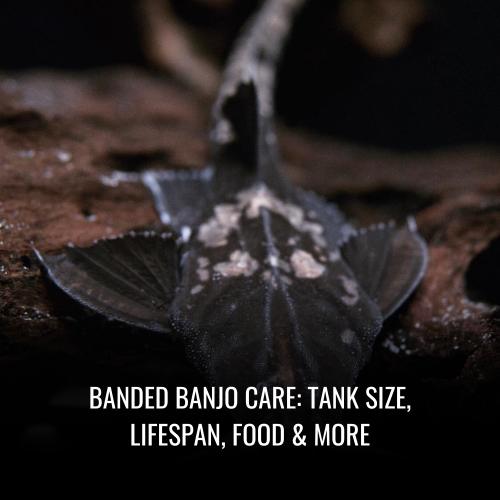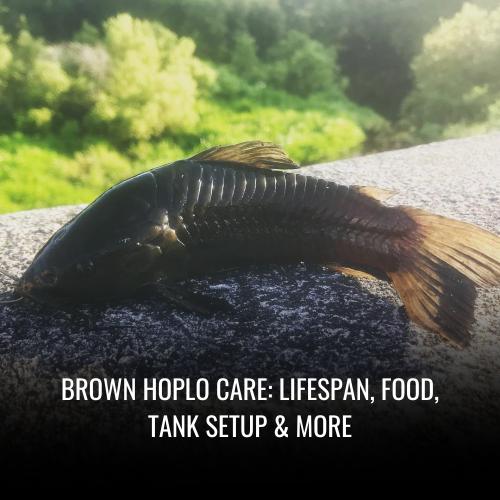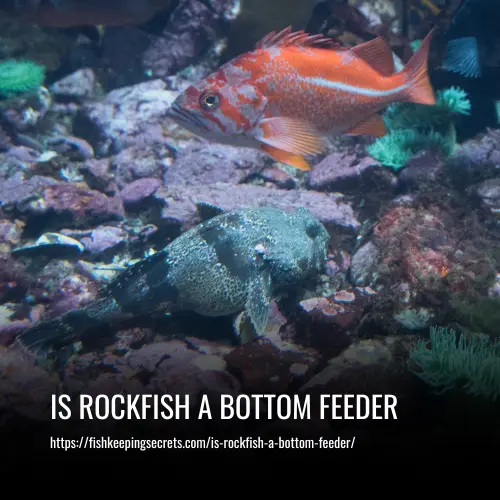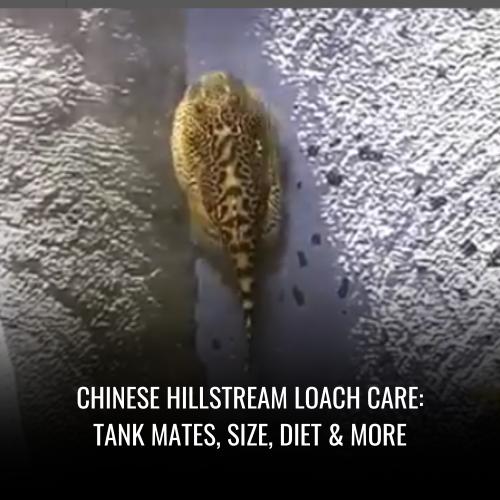Asian bumblebee catfish Care: Size, Tank Mates, Diet, Setup
This post contains affiliate links. As an Amazon Associate, we earn from qualifying purchases.
The Asian bumblebee catfish, scientifically known as Pseudomystus siamensis, is a captivating species hailing from the tranquil waters of Southeast Asia. This catfish is a true standout in home aquariums, courtesy of its striking black body ornamented with vibrant yellowish vertical stripes. Despite being inherently nocturnal species, they engage in ample scavenging activity during the day.
| Property | Description |
|---|---|
| Scientific name | Pseudomystus siamensis |
| Common name | Asian bumblebee catfish |
| Family | Bagridae |
| Usual size in fish tanks | 4-6 inches |
| Recommended pH range | 6.5-7.5 |
| Recommended water hardness | 5-12 dGH |
| Recommended temperature | 75-82°F |
| Reproduction | Egg layers, paternal mouthbrooders |
| Origin | Southeast Asia, Thailand |
| Temperament to own species | Generally peaceful |
| Temperament to other fish | Peaceful, but can be territorial |
| Usual place in the tank | Bottom-dwelling |
| Lifespan | 8-10 years |
| Tank size requirement | Minimum 30 gallons |
| Filtration system | Canister or sponge filters |
| Sexual dimorphism | Males usually slimmer and smaller |
| Substrate cleaning | Regular vacuuming of substrate |
Scientific Name
The primary designation for this remarkable species is Pseudomystus siamensis. It is essential to employ its scientific name, especially when researching or acquiring this species, to differentiate it from other catfish that may also be referred to as bumblebee catfish. Another name it is known by is Leiocassis bicolor, though Pseudomystus siamensis remains the universally accepted scientific name.
Average Size
In captivity, the Asian bumblebee catfish is typically observed to reach a size of about 13 – 15 cm or 5.12 – 5.91 inches. While it’s unusual for them to exceed this size, variations can occur depending on their environment and care. In comparison to their South American counterparts, which can grow substantially larger in regions such as the Orinoco and Amazon basins, they are relatively compact and manageable for aquarium enthusiasts.
Lifespan
On average, the Asian bumblebee catfish boasts a respectable lifespan of 4-6 years within the controlled environment of an aquarium. It’s important to note that a well-maintained habitat with adequate hiding spots, proper water flow, and optimal water conditions can influence their longevity. Stress factors can have a detrimental effect on their health and lifespan, so providing a serene and stable environment is paramount for their well-being.
Natural Habitat
Originating from the flowing rivers and serene tributaries of countries such as Thailand and Malaysia, the Asian bumblebee catfish has adapted to life amongst the driftwood tangles and sandy or muddy riverbeds. Aquarists dedicated to recreating a slice of this natural setting will provide driftwood, plants, and a varied water flow to emulate the catfish’s native habitat.
Appearance
The impact of appearance in forming first impressions is profound, with judgments often forged within a mere 7 seconds of an encounter. Research underscores the advantage of attractiveness, suggesting that it enhances perceptions of confidence, sociability, and success. Such attributes provide a boon during job interviews and shape social dynamics.
| Aspect | Influence on Society |
|---|---|
| First Impressions | Critical in forming judgments within seconds |
| Job Market and Social Sphere | Attractive individuals often seen as more successful |
| Mental Health | Correlation between appearance dissatisfaction and issues |
| Cultural/Societal Standards | Varying standards of beauty across cultures |
| Professionalism | Good grooming associated with competence and reliability |
Ultimately, appearance plays a multidimensional role in both personal and societal contexts, impacting various aspects of daily life and interpersonal interactions.
Behavior & Temperament
Asian bumblebee catfish (Pseudomystus siamensis), a species known for its distinctive bee-like stripes and predatory nature, offers an intriguing dynamic to the freshwater aquarium hobby.
These nocturnal creatures hail from the flowing waters of Southeast Asia, including the Mekong and Chao Phraya basins, and exhibit complex behaviors and temperaments that are crucial for aquarists to understand.
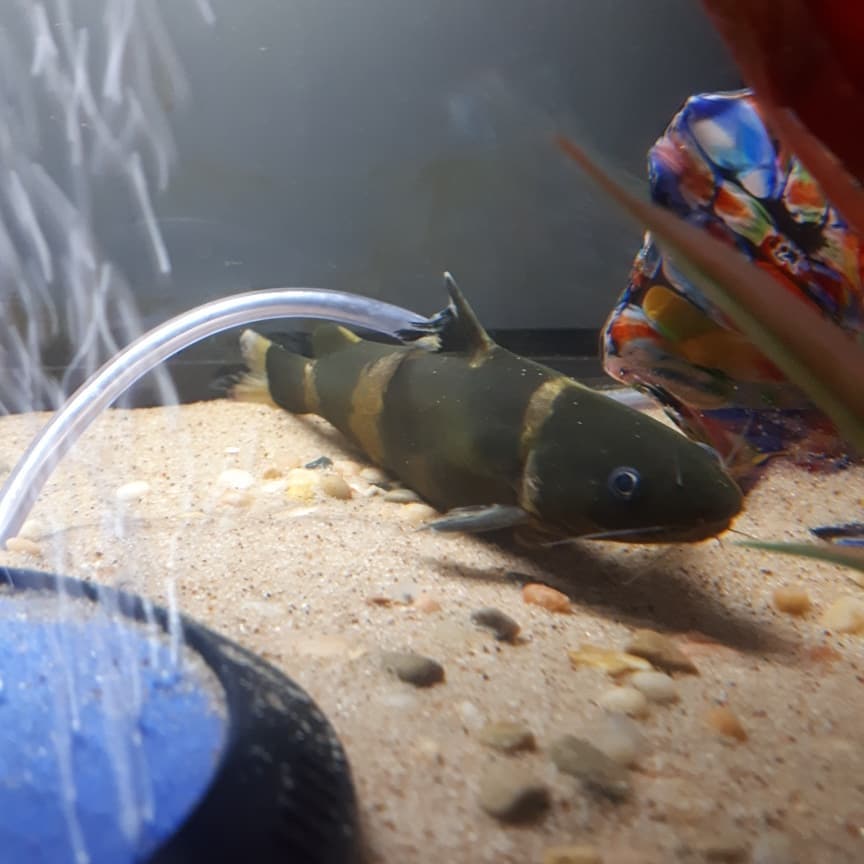
Are Asian bumblebee catfish Fin Nippers?
Unlike their peaceful daytime demeanor, Asian bumblebee catfish may exhibit fin-nipping tendencies, albeit under certain circumstances. Typically, fin nipping is rare, but slow-moving fish with long, attractive fins could potentially entice unwanted attention, especially under the cover of darkness.
To minimize such behavior, it is recommended to house them with faster, medium-sized species that are less prone to being targeted.
Are Asian bumblebee catfish Aggressive To Each Other & Other Fish?
When it comes to aggression, the Asian bumblebee catfish presents a dual persona. In terms of intraspecific aggression, individuals can become territorial, making it advisable to keep just one per aquarium to avoid conflict.
Regarding interactions with other species, their predatory instinct can emerge, especially at night. Smaller tank mates can be seen as potential prey, underscoring the need for careful selection of companions based on size compatibility.
Are Asian bumblebee catfish Friendly To Each Other & Other Fish?
Notwithstanding their nocturnal hunting habits, Asian bumblebee catfish can be relatively peaceful towards other fish that match them in size. Medium-sized barbs, danionins, rainbowfish, or rasboras are generally suitable tank mates that can coexist amicably.
Beyond choosing compatible species, providing ample hiding spaces will also promote harmony within the aquarium by allowing the catfish to seek refuge during daylight hours.
Are Asian bumblebee catfish Schooling Fish?
A distinct feature of Asian bumblebee catfish is their solitary nature. In the wild, they are predominantly found alone, and this preference extends to captivity. They do not require the social interaction that schooling fish seek, making them well-suited to being the sole representative of their species in an aquarium setting.
Can You Have Just One Asian Bumblebee catfish In The Tank?
Given their territorial behavior among conspecifics and their efficiency as predators, it’s wise to maintain a single Asian bumblebee catfish in a tank. This reduces the risk of aggressive encounters and ensures the well-being of other tank inhabitants.
Moreover, this approach also aligns with the catfish’s natural behavior, thus creating a more authentic environment for the fish.
Do Asian bumblebee catfish Need To Be In Groups?
Contrary to some fish that thrive in groups, the answer for Asian bumblebee catfish is a definitive no. They are non-social creatures whose well-being does not rely on the presence of others of their kind. Grouping these catfish may induce stress and aggression, detrimental to their health and the peace of the aquarium community.
For aquarists considering the addition of an Asian bumblebee catfish to their collection, understanding their unique behavioral patterns and ensuring appropriate tank mates and environmental conditions is essential. By respecting the nature of these captivating nocturnal predators, one can enjoy their striking appearance and interesting behaviors while maintaining a balanced and peaceful aquarium ecosystem.
Food & Diet
Asian bumblebee catfish, being the intriguing predators they are, possess a varied and carnivorous palate as opposed to being the aquatic herbivores one might equate to algae-eaters. As nocturnal hunters, they pursue a diet rich in live prey, which could include a varied assortment of delicacies from insects and larvae to other fish and large crustaceans.

Do Asian bumblebee catfish Eat Algae?
Asian bumblebee catfish may encounter and incidentally ingest some algae in their natural habitat as part of their varied diet, but they are not specialized for algae consumption. These catfish are predominantly carnivorous, preferring a diet teeming with protein like insects and small fish, which makes them less effective as a means of controlling algae in the aquarium. They are not to be relied upon for algae management and aquarists should consider other species or means if algae control is the goal.
Do Asian bumblebee catfish Eat Shrimp?
Keeping shrimp in the tank with Asian bumblebee catfish can be risky. While they do consume a large range of food items, it is crucial to remember that these catfish are hunters by nature. Small shrimp easily fall within the prey size range for these catfish—particularly when the aquarium lights dim—making them vulnerable to being eaten.
Therefore, introducing shrimp to a tank housing an Asian bumblebee catfish may inadvertently turn them into a live snack rather than long-term tank mates.
Do Asian bumblebee catfish Eat Bloodworms?
Bloodworms make an excellent choice when it comes to dietary supplements for Asian bumblebee catfish. These frozen foods are rich in protein and can serve as an appealing and nutritious meal for the catfish.
Their predatory instincts are sparked by such live and frozen food items, offering them an experience close to their natural feeding habits in the wild. Bloodworms, either live or frozen, are often accepted eagerly, providing variety to their diet and promoting good health.
Do Asian bumblebee catfish Eat Mosquito Larvae?
Although exact preferences for mosquito larvae are not explicitly documented, Asian bumblebee catfish, with their carnivorous habits, are likely to consume them if given the opportunity.
Mosquito larvae, being a protein source, fit well into the natural diet of these predators and can be included as part of a diverse feeding regime to simulate a more naturalistic environment within the confines of an aquarium.
Do Asian bumblebee catfish Eat Planaria?
Planaria, though not a staple in their diet, can be part of the carnivorous catfish’s varied intake, especially since they are opportunistic feeders. However, caution should be exercised, as relying solely on planaria or any single food source can be insufficient for their nutritional needs and may inadvertently introduce disease.
It is advisable to instead opt for a mix of high-quality pellet, frozen, and live foods to ensure a balanced diet for the health of the Asian bumblebee catfish.
Do Asian bumblebee catfish Eat Plants?
Asian bumblebee catfish typically do not show a preference for consuming plant material, aligning with their carnivorous dietary habits. Aquarists should not expect these catfish to nibble on aquatic plants, making them a suitable choice for a planted tank where the flora is to be left untouched.
The focus should rather be on providing nourishing, protein-rich alternatives such as brine shrimp, earthworms, and mussels, ensuring their dietary requirements are fully met.
Sexing: Male vs Female
Sexing Asian bumblebee catfish requires keen observation of physical characteristics, particularly the genital papilla. Males display an elongate genital papillae, a short white protrusion found immediately in front of their anal fin. This feature may become more pronounced during breeding periods.
In contrast, females do not possess this elongate papilla. Females typically have a fuller body shape, notably stockier than their male counterparts. When female Asian bumblebee catfish are ready to spawn, their body cavities may appear distended due to the presence of ripe eggs.
Below is a comparison table outlining the key differences between male and female Asian bumblebee catfish:
| Feature | Male Asian Bumblebee Catfish | Female Asian Bumblebee Catfish |
|---|---|---|
| Genital Papilla | Elongate, in front of anal fin | Lacks elongate papilla |
| Body Shape | Slender profile | Stockier profile |
| Breeding Adaptations | Genital papilla may elongate further | Body cavity distorts with ripe eggs |
When attempting to sex these catfish, it is crucial to look for these specific signs to correctly distinguish males from females.
Asian bumblebee catfish Tank Mates
The Asian bumblebee catfish, while peaceful with fellow inhabitants of a similar size, is not typically suited to traditional community aquariums due to their predacious nature towards small fish. Ideal tank mates for this nocturnal species include those that can hold their own without becoming prey or posing a threat.
Appropriate companions for the bumblebee catfish could be rainbow sharks, sturdy cory catfish, algae-eating bristlenose plecos, colorful dwarf gourami, wriggling kuhli loaches, active various barbs, and peaceful platies. These species are often able to coexist without conflict, as other fish frequently overlook the discreet Asian bumblebee catfish due to their gentle demeanor and tendency to seek refuges during daylight hours.
Aquarium Setup
The Asian bumblebee catfish is a fascinating species that brings an exotic touch to freshwater aquariums. When setting up an aquarium for the Asian bumblebee catfish, there are several critical factors to consider to ensure a hospitable and engaging environment for your whiskered friend.
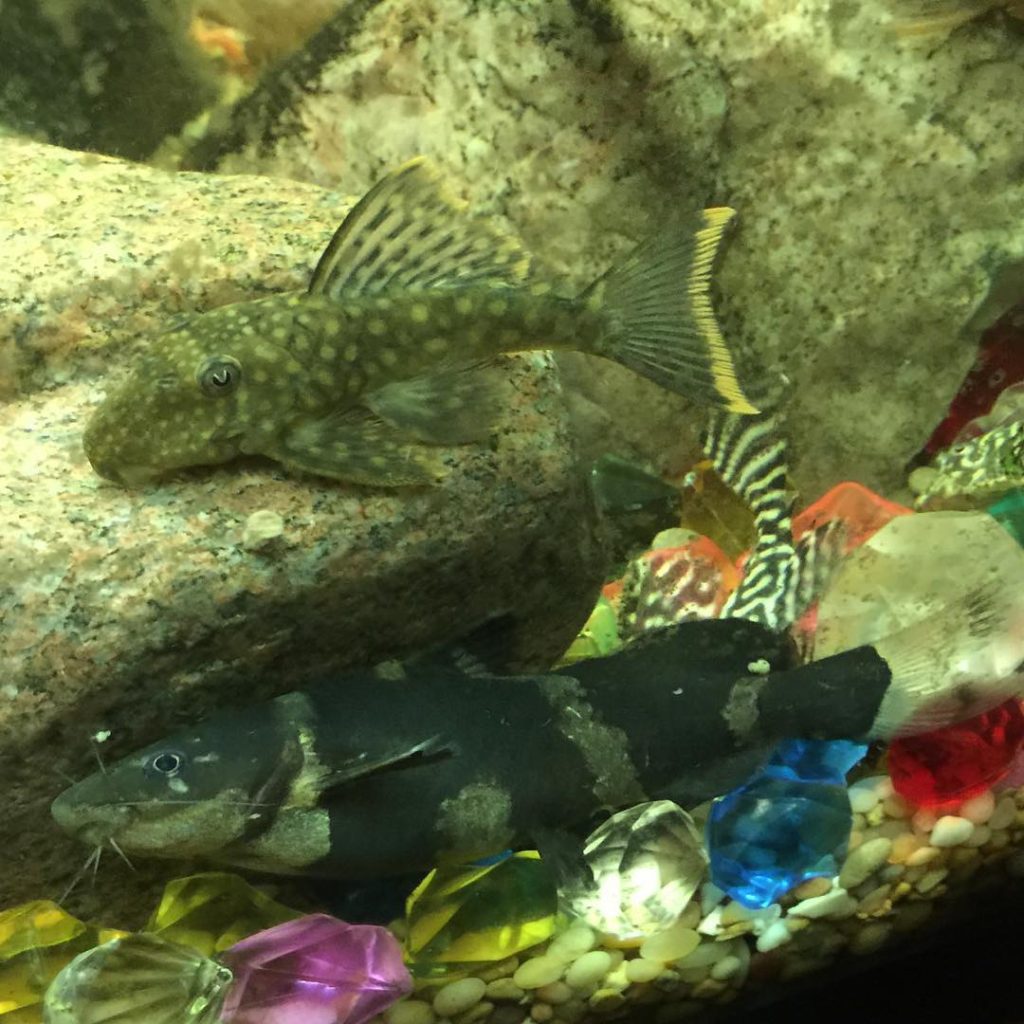
Ideal Tank Size
For those looking to care for the Asian bumblebee catfish, an important consideration is the size of the tank. Although these catfish are relatively petite and enjoy cozy hiding spots, they need adequate space to roam, particularly at night, when they are most active.
The minimum recommended tank size for one bumblebee catfish is 55 gallons to allow it to stretch its fins and explore, as this species can grow up to 6 inches in length. Here’s a simple guide for tank sizing based on the number of catfish:
| Number of Bumblebee Catfish | Minimum Tank Size |
|---|---|
| 1 catfish | 55 gallons |
| Each additional catfish | +10 gallons |
Ideal Water Parameters
Maintaining optimal water parameters is crucial for the well-being of Asian bumblebee catfish. These fish thrive in warmer temperatures, ranging from 70°F to 78°F, and can adapt to a pH range of 5.8 to 7.8, with a sweet spot of 6.5-7.5 offering the best conditions for their health.
Water hardness should be maintained at a soft range between 8-12 dGH. Frequent testing, every few days, helps prevent sudden swings in water conditions that could stress the fish.
Filtration
Efficient filtration is imperative for sustaining the health of your Asian bumblebee catfish. The setup should ensure moderate water movement with areas of calm for the catfish to rest.
It is advisable to use canister filters to keep water clean and balanced, addressing their sensitivity to nitrites and ammonia. As well, heaters should be covered with guards to protect the catfish when they seek refuge in darker nooks.
Lighting
When it comes to lighting, the Asian bumblebee catfish prefers a subdued ambiance. Bright aquarium lights can be softened with floating plants or by positioning broad-leaved plants at the water surface, providing shade and mimicking the dimly lit environments these fish inhabit in the wild.
For those wishing to observe their nocturnal activity, a blue moonlight can be timed to come on as the main lights go off, creating the perfect evening setting for these shy creatures.
Common Possible Diseases & Prevention
Health and Well-being Bumblebee catfish, like any aquatic species, can encounter health issues such as ich (white spot disease), fin rot, and bacterial infections. To ensure the longevity and vitality of these vividly patterned catfish, prevention measures are paramount.
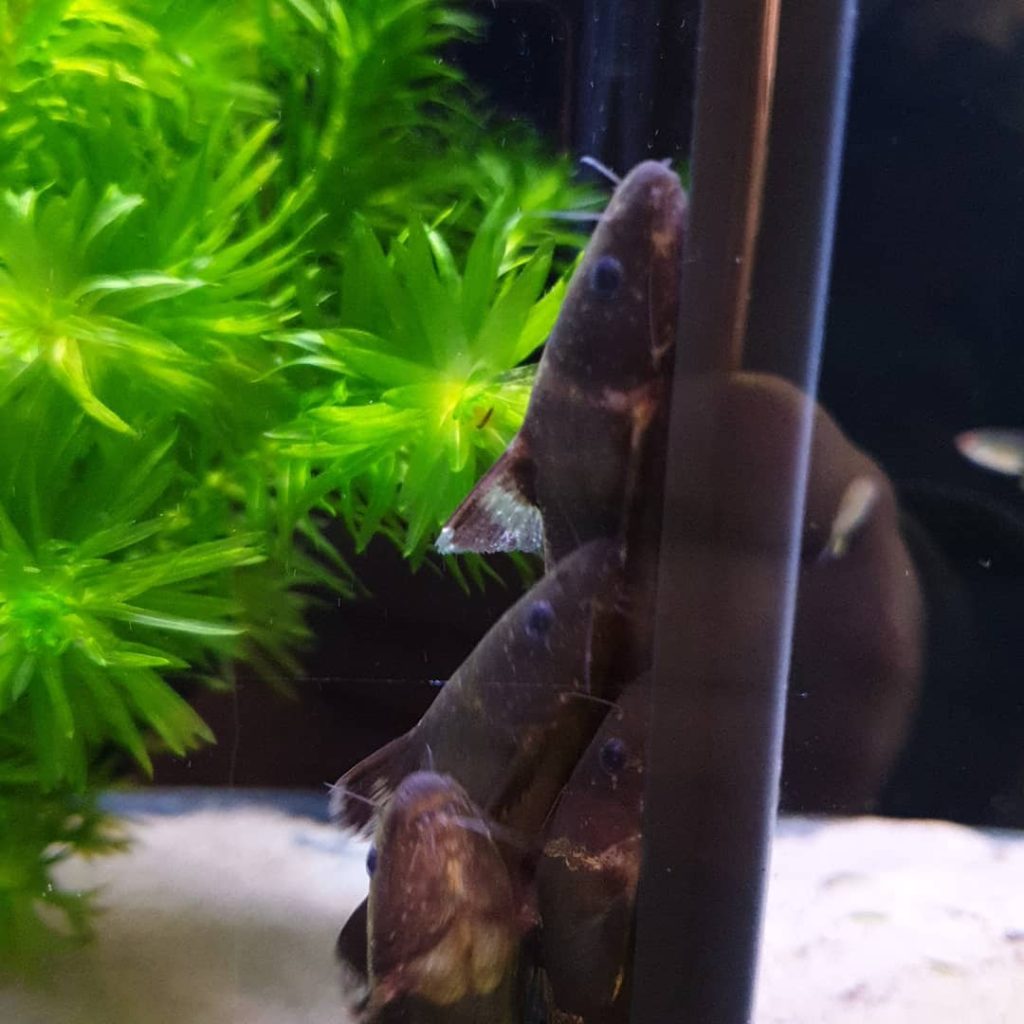
Preventative Measures
- Maintaining pristine and stable water conditions is at the forefront of disease prevention. Regular water changes and filtration maintain a clean environment.
- Proper water parameters need to be rigorously monitored, as fluctuations can compromise their immune system.
- A balanced diet reinforces their health, so provide a variety of food items like high-quality pellets, frozen foods, and appropriate flake food.
- Always quarantine new additions to your aquatic family for a minimum period before introducing them to the main tank. This practice curbs the introduction of potential pathogens.
Observation is Key Closely observing your catfish for changes in behavior or appearance is crucial. Promptly address the first signs of distress or disease to mitigate the spread and impact on your tank’s ecosystem.
Regular Maintenance Schedule:
| Task | Frequency |
|---|---|
| Water parameter testing | Every few days |
| Water changes | Weekly |
| Filter check and maintenance | Monthly |
Breeding Asian bumblebee catfish In Aquarium
Breeding the distinctive Asian bumblebee catfish requires careful preparation and attention to their specific needs. A well-maintained aquarium is essential, starting with a sizeable tank – a minimum of 55 gallons is recommended to accommodate their active breeding behavior.
Aquarium Conditions for Breeding:
- Tank Size: Minimum 55 gallons.
- Water Quality: A canister filter is key for maintaining pristine conditions.
- Aquascaping: Incorporate rocks and driftwood to offer refuge and spawning sites.
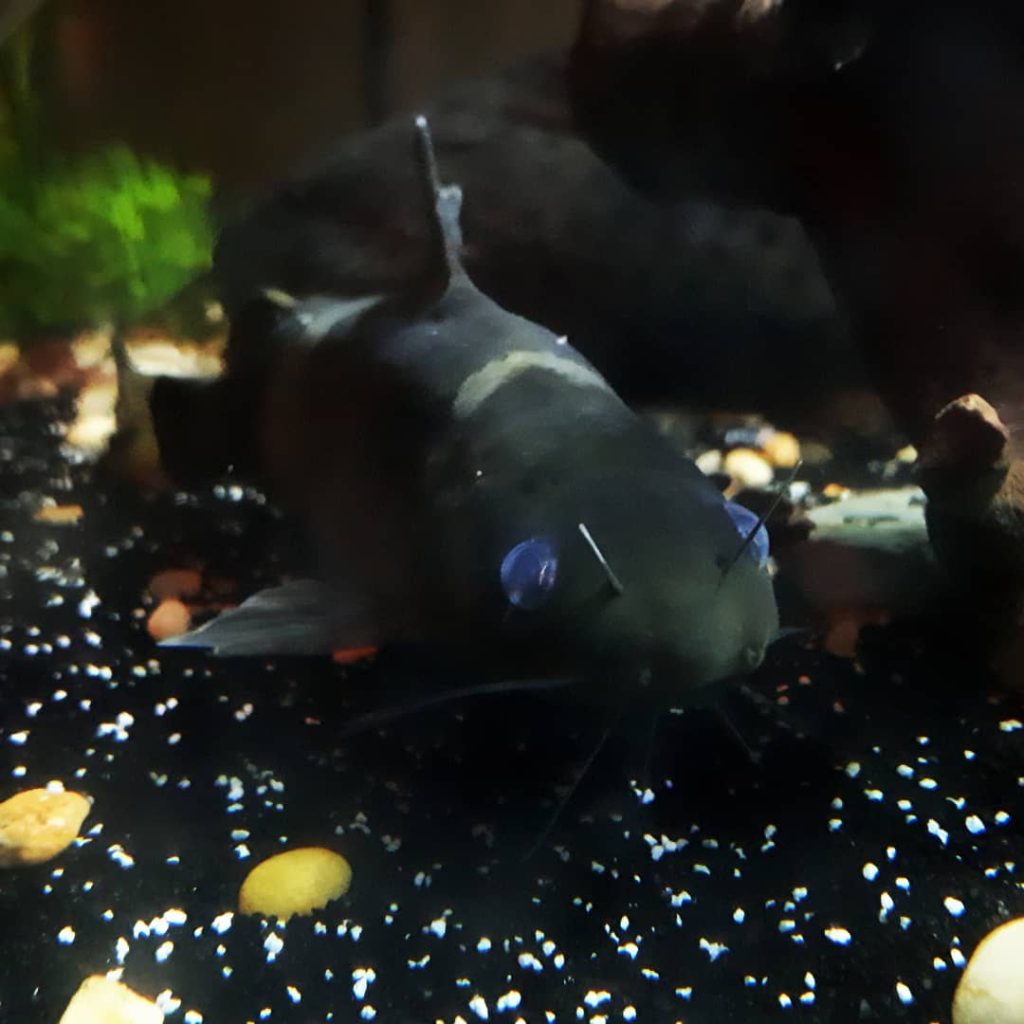
Water Quality Is Paramount
It’s vital to ensure a biologically mature aquarium environment. These catfish are particularly sensitive to nitrite and ammonia levels, which should be kept in check to provide a stable, healthy environment for breeding.
Nutrition During Breeding
Feeding habits need special consideration. Avoid live fish and mammalian or poultry meat to prevent nutrition-related health issues. These food items are typically poor in nutritional value and can introduce harmful elements to your catfish’s diet.
Remember, the secret to successful breeding lies not just in the setup but in ongoing care—monitor water conditions diligently and provide a balanced diet that steers clear of risk-prone food choices.
Are Asian bumblebee catfish Easy To Keep?
The Asian bumblebee catfish, while striking and unique, are not necessarily the easiest fish to keep due to their moderate care level. This classification indicates that they require more specialized attention and care compared to other freshwater fish. Notably scaleless, they are particularly sensitive to fluctuations in water chemistry parameters and exposure to medications, making their maintenance more challenging.
Though relatively peaceful with similarly sized tank mates, their predatory instincts make them unsuitable for the traditional community aquarium. They tend to consume smaller fish, which necessitates careful selection of companions if they are not to be kept singly. A minimum tank size of 55 gallons is advisable to accommodate their adult size, which can reach up to 6 inches, providing them with the necessary space to thrive.
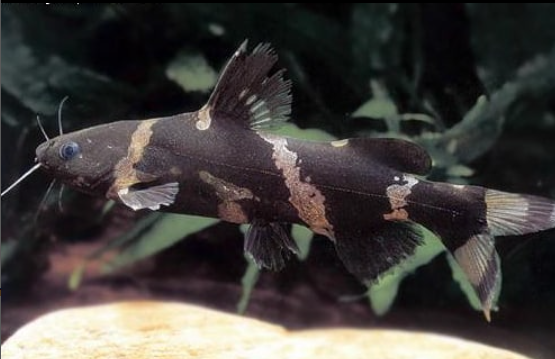
Are Asian bumblebee catfish Sensitive To Water Changes?
Asian bumblebee catfish demonstrate a high degree of sensitivity to shifts in water conditions. Their scaleless bodies leave them more susceptible to changes and stress caused by fluctuating water chemistry. Keeping their water soft with a pH level between 6.5 and 7.5 is crucial, though some Asian bumblebee catfish have been known to adapt to levels up to 7.8.
To ensure a stable environment that fosters their well-being, quick water level tests are recommended every few days. Consistent 20-25% water changes each week are vital in maintaining the proper balance and reducing the risk of disease. This regular maintenance helps replicate the stability of their natural habitat and keeps these sensitive fish healthy.
Are Asian bumblebee catfish Sensitive To Ammonia?
Indeed, Asian bumblebee catfish are extremely sensitive to ammonia due to their lack of scales. Elevated ammonia levels are particularly hazardous to their health and can lead to harmful effects, including stress and illness. This can make treating conditions like ammonia poisoning in Asian bumblebee catfish difficult, as they are also sensitive to many of the medications used to treat such conditions.
Careful monitoring of ammonia levels is therefore essential in maintaining a healthy aquarium for these catfish. A diligent and consistent approach to aquarium maintenance is necessary to ensure that ammonia levels remain low to prevent potential harm to these captivating but delicate creatures.
Are Asian bumblebee catfish Sensitive To Copper?
Asian bumblebee catfish’s scaleless nature extends to a heightened sensitivity to copper, which may be present in several aquarium-related products such as treatments, medications, and some fish foods. Excessive copper in the water can easily distress, sicken, or even kill an Asian bumblebee catfish.
Thus, it is critically important for aquarium owners to not only monitor but to diligently control copper levels in the water. Opting for copper-free alternatives and using products specifically designed for scaleless fish can aid in creating a safe habitat for the Asian bumblebee catfish.


